 |
 |
04.18.24

Leading Thoughts for April 18, 2024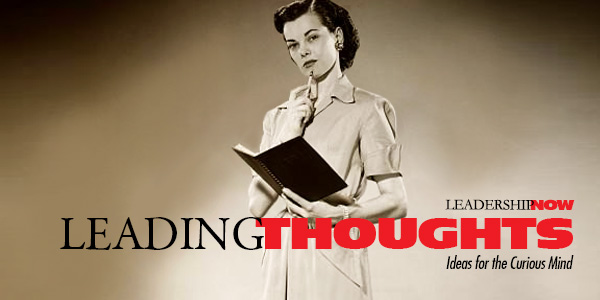
IDEAS shared have the power to expand perspectives, change thinking, and move lives. Here are two ideas for the curious mind to engage with: Professor Mary Murphy on organizational mindsets: “The question is not: ‘Are you a person with more of a fixed or growth mindset?’ The question is: ‘When are you in your fixed mindset and when are you in your growth mindset?’ At the organizational level, the question is not: ‘How can we avoid hiring fixed mindset people?’ The question is: ‘What triggers our employees to adopt more fixed- or growth-mindset views and behaviors? How can we shape the environment to encourage more of a growth mindset more of the time?’” William Ury on how we become our own worst enemy: “The greatest power we have in difficult situations is the power to choose not to react but to go to the balcony instead. The balcony is a place of calm and perspective where we can keep * our eyes on the prize.” Source: Possible: How We Survive (and Thrive) in an Age of Conflict Look for these ideas every Thursday on the Leading Blog. Find more ideas on the LeadingThoughts index.
Posted by Michael McKinney at 10:16 AM
04.15.24

How To Rearrange Your Brain for Success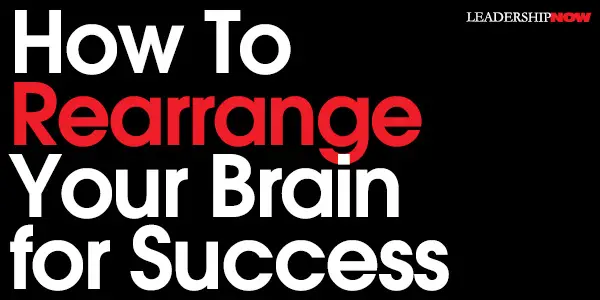
BRAD JACOBS, CEO and serial entrepreneur—United Rentals and XPO Logistics—has made and kept a few billion dollars and aims to show us how to do the same in How to Make a Few Billion Dollars. The most valuable part of the book for me was the first chapter on transforming how you use your mind. Here are ten ideas for rearranging your brain to achieve “big goals in turbulent environments where conventional thinking often fails.” Love He begins with love. Why? Love “has a lot to do with getting your brain in the right place to make good decisions. Fast-paced business environments swing between ups and downs, with many stressful interactions. Love is in an expansive emotional state that allows you to neutralize conflict and get everyone to a better place.” How do you get there? Through one-on-one gratitude conversations. Think about why other people deserve your gratitude and then sit down with them and let them know in a direct, personal manner. Expect Positive Outcomes Negative thoughts come to us quite naturally. The trick is not to let them control your thinking. Negative thoughts are often our knee-jerk reaction to a given situation. We need to acknowledge them and then reframe them in a positive light. Jacobs provides an instructive example from his family life: When we put our kids to bed at night, we’d ask them the same question many parents do: How was your day? Sometimes, we’d hear the good, sometimes the bad, and sometimes the ugly. Then we met Martin Seligman, and he suggested asking children a slightly different question: What was the happiest moment of your day? We tried it. The change was dramatic—no bad, no ugly, just the good. And maybe because our kids knew the question was coming, they kept their antennas up all day with the expectation that the happiest moment could happen at any time. What an easy create an optimistic frame of mind! What was the best part of your day? Give Yourself a Break Stop expecting unrealistic perfection from yourself and others. We sabotage ourselves all the time. Our thought processes are full of all sorts of cognitive distortions, from catastrophizing (thinking of small problems as enormous impediments) to perfectionism, where anything less than perfect execution causes intense frustration. Another cognitive distortion is dichotomous thinking (having rigid or “all-or-nothing” views). By learning to recognize these thought patterns and course-correcting accordingly, I’ve spared myself a lot of trouble. I learned, for example, to turn my internal chatter to my advantage by reframing negative thoughts as useful data rather than objective reality. If we understand that mistakes are inevitable, it will be a lot easier to “maintain your mental equilibrium as you pursue your big goals.” Expand the Possible Meditation, daydreaming, or thought experiments (the German term gedankenexperiments) can change how we relate to the world. During this time of mental calm, we can often find the best solutions, rejuvenate and become creative. Daydreaming exercises remind me that positive emotions matter, especially in chaotic business environments. When my energy is low, my favorite technique to rejuvenate and unleash creativity is to close my eyes and allow my attention to gently float in my brain. Embrace the Problem Jacobs’ mentor told him early on in his twenties as he unloaded on him with his problems, “Look, Brad, if you want to make money in the business world, You need to get used to problems, because that’s what business is. It’s actually about finding problems, embracing and even enjoying them because each problem is an opportunity to remove an obstacle and get closer to success.” Problems are an asset. The bigger your ambition, the bigger your problems. “If your initial reaction to a major setback is overwhelming frustration, that’s understandable, but it’s also counterproductive. Once you’re over that moment, pivot toward success: ‘Great! This is an opportunity for me to create a lot of value. If I can just figure out how to solve this problem, I’ll be much closer to my goal.’” Acknowledge You’re Not Perfect There are three impediments to effective leadership:
Accept your imperfections and learn from them. Cut your losses, adapt, and improve. “If you resist embracing an imperfect situation today, you might lose the opportunity to capitalize on it tomorrow.” Practical Radical Acceptance If you accept your own imperfections, you must also accept the world as it is, not as you wish it to be. Win or lose, focus on the best thing to do right now. “Radical acceptance quiets the noise created by yesterday’s decisions and today’s wishful thinking. It allows you to make a logical, forward-looking decision based on what’s likely to happen next—that and risk management are the big, relevant considerations.” Leave Judgment at the Door “The path to radical acceptance begins with non-judgmental concentration.” It allows you to focus on the issue at hand. “Non-judgmental concentration trains your brain to realize that the people and things in your life don’t exist relative to you; they simply exist. If you can take yourself out of the equation, you’ll have a much clearer view. Uncluttered by judgmentalism, you can work more efficiently; because you won’t be as distracted, and you can think more objectively, too. Think Huge To win huge, you have to think huge. “Your goals should be bigger than what you currently think you accomplish, because that can actually help you achieve those goals.” Visualize and be specific about what and when. Stay Humble Arrogance keeps you from growing—advancing. “Thinking you know it all is a trap, because you don’t—at least I don’t. If you stay humble, you’ll keep advancing.” That’s how you rearrange your brain for success. In subsequent chapters, Jacobs how to spot major trends, mergers and acquisitions (of which he has led about 500), building a team, competition, and more. I wrote this book for people who want to work their tails off, outsmart the competition, put their customers on a pedestal, and make a lot of money for their families. These goals require creativity and an enthusiasm for change—qualities at the heart of entrepreneurship. You can foster this in any size organization, whether you’re the owner of a family business or the CEO of a multibillion-dollar company to create its next billion dollars. 
Posted by Michael McKinney at 07:16 AM
04.12.24

How To Build a Future Others Don’t See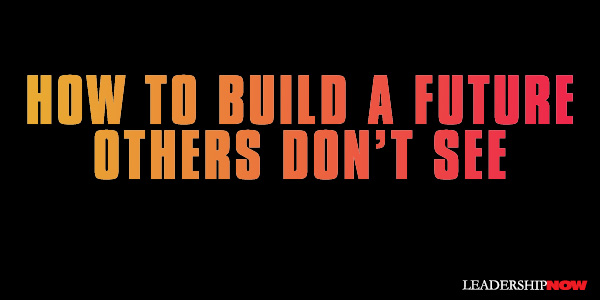
INNOVATION is more about being bold than being disruptive. If you want to push your career and your organization forward, you need to get bold. Using examples of some of the most extraordinary disruptors, Shawn Kanungo offers eight lessons to help you become bolder in The Bold Ones. Bold Ones are those who are brave enough to fundamentally reinvent themselves, challenge norms, and revolutionize their worlds. Bold Ones think, act, and build for a future they see, one that others close their eyes to. Disruption strategist Kanungo presents the mindset needed and the strategies to adopt to create your own path forward. Success Is a Pitfall Past success kills innovation. You become the expert. You get comfortable with the status it brings you. To innovate, you need to let go of those things. You must approach things as if you knew nothing. “If you approach problems with the same “mindset” accessed five minutes ago, I promise you, you’re starting to become an expert, ripe for disruption.” Tragically poignant observation: “He was the gatekeeper of a world he didn’t understand anymore.” He clung to the status quo, going down the only path he knew, and missed what was coming. Don’t let that be said of you. We see this too often. Chipping Toward Your Next Big Move We are advised to stick to our core competency. “The intention may be good, and there’s clearly wisdom in focus, but if we’re not careful, we’ll fall into a trap, one where we hyperfocus only on a niche, missing where the world’s going, or our own unique skill set.” In a changing world, it is important to continually ask yourself, “Where am I burying my head in the sand? Am I focusing too much on what I believe is my core competency?” How do you avoid this trap? Explore. “You’ve got to have enough input into your life, enough ideas circulating, and enough channels of information, that there’s a constant flow.” Move outside your comfort zone. Explore areas not common to you. Check out the fringes. Paradox of Piracy Take a lesson from the greatest pirate of them all—the notorious Chinese pirate Ching Shih. “When you aim for the fringe, you ultimately attract the masses.” She inspired loyalty among those who had been marginalized by others. The paradox is “if you want to go broad in the long run, you’ve got to start by thinking niche in the short run.” If you inspire the underdogs, you will find the deepest loyalties. Disruption Is a Joke It’s a joke until it’s not. A disruption always begins as a seemingly silly idea. “To drive the most value, you must go against the crowd and, simultaneously, be right in your contrarian ideas. You might be wrong a lot more than you’re right. But the one time you’re right will pay off big.” Always be willing to ask yourself (and your team), What are we missing? What if we’re wrong? And What if they’re right? Innovation’s Dirty Little Secret Innovation means discovering, not inventing. Discover what’s hidden—secrets. There are three kinds of secrets you should be on the lookout for: Obvious Secrets (Obvious secrets are loopholes-small little anomalies that, once exploited, offer immediate and real value. Ask bolder questions.), Hard-to-Find Secrets (Go outside your entire company to dig deeper into the customer psyche. Follow humans around to understand why they do what they do. In particular, pay attention to humanity’s oddest habits.) and finally Deepest, Darkest Secrets (To find these secrets you’ll need to wander outside your industry and consider broader trends in human behavior, or how an idea can be borrowed from one field and placed into a new context.). One True Fan You only need to deliver to one true fan. Create something “catchy.” Look for that shareable angle and then overdeliver to that one true fan. Respond to every interaction individually. No exceptions. How to Engineer a Hot Streak Science tells us that you are likely to experience a hot streak after a period of intense exploration. Hot streaks are not random. “The soon-to-be hot streakers first allow themselves to charge up by experimenting in a variety of areas, with varying degrees of success. After exploration, the individuals then prune back their efforts, laser-focusing on what they’re most talented at. And then they execute.” If you want to engineer a hot streak, you need to do something to get it going. Jump in. Disrupt a Culture; Leave a Legacy To disrupt a culture, you need to do something that is bigger than you. Create powerful visuals, become great at telling stories, invite others in, and think big, but don’t get too far ahead of your audience. Never get past what they can tolerate at the moment. Story tip: “The greatest stories don’t just provide the needed inspiration, but offer a touchstone, a point from which people can add to create their own story inside your universe.” You don’t need to quit your job to innovate. Speak up. Be curious and ask, “Why do we do it this way?” Keep asking. 
Posted by Michael McKinney at 07:20 AM
04.11.24

Leading Thoughts for April 11, 2024
IDEAS shared have the power to expand perspectives, change thinking, and move lives. Here are two ideas for the curious mind to engage with: Chris Deaver and Ian Clawson on co-creating: “The dark truth of success is that if we make it all about ourselves, our own egos, our individual performance, it eventually breaks down. It won’t have staying power. Most of us have experienced the reality of bosses or corporate cultures that go it alone, pushing agendas on us rather than building with us. Startups know this feeling. People running full speed toward their dreams know this feeling. But it’s fleeting. It doesn’t last if it’s not built with others, co-created.” Source: Brave Together: Lead by Design, Spark Creativity, and Shape the Future with the Power of Co-Creation Adam Grant on personality and character: “Character is often confused with personality, but they’re not the same. Personality is your predisposition—your basic instincts for how to think, feel, and act. Character is your capacity to prioritize your values over your instincts. Source: Hidden Potential: The Science of Achieving Greater Things Look for these ideas every Thursday on the Leading Blog. Find more ideas on the LeadingThoughts index.
Posted by Michael McKinney at 12:10 PM
04.08.24

How to Make Wise Decisions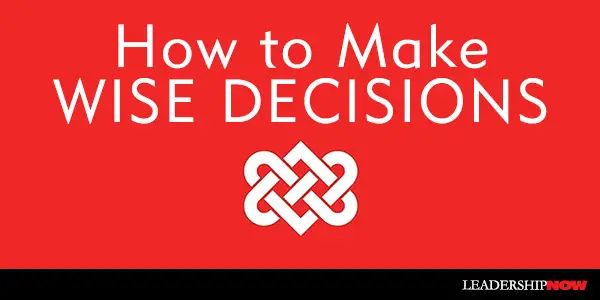
WE ALL MAKE bad or certainly less-than-stellar decisions for any number of reasons. Sometimes, there are too many options to choose from. Or, conversely, we don’t bother to explore other options than the ones in front of us. We easily create narratives to fit our interpretation of reality, cherry-picking the information that gets us what we want. And these are just the more common challenges we face. So, what do we do? In Wise Decisions, Jim Loehr and Sheila Ohlsson take us through some science-based approaches to help us make better choices. The starting point for good decision-making is perhaps obvious but easily overlooked and ignored, especially amid the rush of life. Our health is the foundation for good decision-making. Our holistic health—mental, physical, emotional, and spiritual—is the vital starting point for sound, thoughtful, and measured decision-making. We simply cannot take in, consider, and thoughtfully process multiple streams of relevant information, both tangible and intangible, when we are anxious, depressed, sleep-deprived, sedentary, isolated, and self-medicating with wine and M&Ms! Good decision-making is a process of reflecting and responding rather than reacting. We all hear something that can be vital to making good choices, but it doesn’t always get through. We block it. Inside of us, we have a gatekeeper who decides what gets through and what gets blocked. The authors call it our Y.O.D.A. – Your Own Decision Maker. To be your best advisor possible, Y.O.D.A. should be preloaded with critical life coordinates such as core values, beliefs, and purpose in life. Your own resident advisor holds the keys to extraordinary decision-making. Wise decision-making requires that we preload the control center in our brain our Y.O.D.A., with a complete grasp of who we want to be and what matters most to us. These values become the reference points that guide the decisions we make. Wisdom is the acquired ability to rise above the immediate demands and stresses of the moment; to make decisions that are grounded in transcendent values, core beliefs, and high ethical standards; and to achieve real and enduring perspective on the issues question. Those preloads need to be protected. There are always forces at work that can derail our thinking and compromise our choices. We must guard against corrupted input by reflectively analyzing and scrutinizing all information before letting it in to our control center. “When a belief is consistent with what we deeply want or need, we are less likely to scrutinize its authenticity.” We are not as rational as we think we are. Rather, we are “emotional creatures who have the capacity to be rational. Our emotions run the show in life, and our capacity for logical thinking serves to moderate the flow of emotion.” When we reflect, process, frame, and reframe life experiences work for us rather than against us, we keep our hands firmly on the proverbial cognitive steering wheel. And this is precisely how we maintain a sense of control when the storms of life are raging. What’s the mind is also real in the body at a molecular level, and the stories we tell ourselves can either help or harm our health and, hence, our decision-making capacity across life. Our emotions signal to us that something important requires our attention. It signals a need to pause and reflect. Should I act on them or not? “All emotions, whether we think of them as good or bad, are a fundamental part of being human. The goal is not to feel joy, inspiration, and happiness 24/7, but rather to identify all our emotions and to manage the resulting feelings in a way that way that enhances our overall health and well-being.” Stress, of course, has an impact on our ability to make sound decisions. Stress causes us to overthink and hyper-focus on the issue at hand. What we need is perspective. Without a view of the bigger picture, we often resort to poor thinking and behaviors that we rationally know don’t serve us well. Seeing only a sliver of the story, usually the bad part, too often results in a form of mental inflexibility and rigidity that can completely undermine our ability to make sound decisions. When stress levels are excessive, and we fail to buffer the stress with sufficient recovery, we tend to fall back on old and well-trodden behavioral paths. This happens because our narrow aperture simply doesn’t allow any other viable alternative to rise to the surface. During particularly stressful times, it is important to stay connected to others. And as stated above, we need to buffer stress with sufficient recovery or restore the energy consumed by the stress. The authors break down ways to do that: Balancing physical stress with recovery involves #healthy nutritional input, hydration, exercise, strategic movement, sleep, and intermittent periods of rest. The more our personal view of reality and the sorties we tell ourselves align with the world as it really is, the better the choices we will make. “When we fail to recognize that a piece of incoming data is faulty, the stories and beliefs and the decisions built upon that data will also be faulty. The stories we form in life, even those we consider foundational, perhaps even sacred, can be contaminated by biased data and faulty interpretation.” 
Posted by Michael McKinney at 12:17 PM
04.04.24

Leading Thoughts for April 4, 2024
IDEAS shared have the power to expand perspectives, change thinking, and move lives. Here are two ideas for the curious mind to engage with: General Gordon R. Sullivan on the power of reflection: “Lieutenant Colonel Hal Moore said that he had been reflecting, asking himself three questions: “What is happening? What is not happening? How can I influence the action?” Moore’s behavior captured the essence of strategic leadership. Moore was scanning his environment, thinking about his situation, then determining his best course. The future was winning the battle, simply parrying each thrust. The genius in Moore’s approach lies in his second question. By reflecting on what was not happening, he opened his mind to broader opportunities, to see the full range of his options. He was better able to anticipate what might or might not happen next and to plan his moves to best advantage. When asking can I influence the action?” he could thus envision a far greater range of responses than if he had simply been thinking in terms of action and counteraction.” Source: Hope Is Not a Method: What Business Leaders Can Learn from America’s Army Fred Kofman on transcendent leadership: “Transcendent leaders work to align the individual purposes of those under them into a larger collective purpose that makes each individual larger as well. They align their best efforts with the organization’s in natural ways that other systems can’t lead them to do. It is the difference between rowing and sailing. A boat moved by mere muscle is no match for one moved by wind. A boat propelled the wind flows in harmony with the natural forces. An organization that moves forward by formal authority is like a rowboat. One moved by a transcendent purpose is like a sailboat with the wind behind it, filling its sails.” Source: The Meaning Revolution: The Power of Transcendent Leadership Look for these ideas every Thursday on the Leading Blog. Find more ideas on the LeadingThoughts index.
Posted by Michael McKinney at 07:07 AM
04.01.24

First Look: Leadership Books for April 2024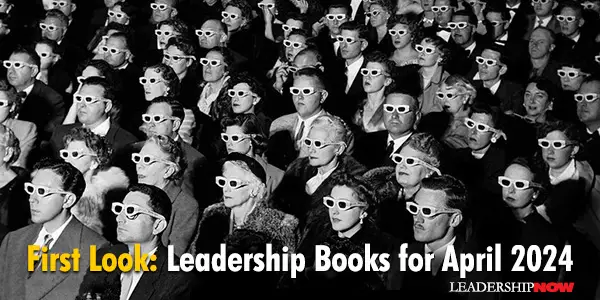
HERE'S A LOOK at some of the best leadership books to be released in April 2024 curated just for you. Be sure to check out the other great titles being offered this month.
Google’s Executive Productivity Advisor offers insights on how to make the “new way of work” work for you, providing actionable steps to optimize your productivity, accomplish more, prevent burnout, and cultivate a harmonious work-life balance. Every day, tens of thousands of Google employees, from executives to interns, rely on Laura Mae Martin’s tips and best practices for how to make the most of their time. Now, with Uptime, Laura brings her unique approach to productivity and well-being to anyone who wants to be more effective and experience “calm accomplishment,” whether at work, at school, or in their own personal lives.
Something new entered our world in November 2022 — the first general purpose AI that could pass for a human and do the kinds of creative, innovative work that only humans could do previously. Wharton professor Ethan Mollick understood that humans had developed a kind of co-intelligence that could augment, or even replace, human thinking. Through his writing, speaking, and teaching, Mollick has become one of the most prominent and provocative explainers of AI, focusing on the practical aspects of how these new tools for thought can transform our world. In Co-Intelligence, Mollick urges us to engage with AI as co-worker, co-teacher, and coach. He assesses its profound impact on business and education, using dozens of real-time examples of AI in action. Co-Intelligence shows what it means to think and work together with smart machines, and why it's imperative that we master that skill.
What is a mentor? Why is having a mentor crucial to success? Or how do you make sure that you're a good mentor? In Mentorship Unlocked: The Science and Art of Setting Yourself Up for Success, veteran entrepreneur and innovator Janice Omadeke delivers an insightful discussion of mentorship, including what it is, how to find a qualified mentor, and how to make mentorship work for you. In the book, she explores the mentorship advice that helped her start a groundbreaking company after studying entrepreneurship and strategic management at MIT and Harvard. You’ll find practical steps you can take to build your own plan for finding the right mentor for you, or for becoming someone else’s trusted advisor.
Perhaps you're busy but still feel empty. Maybe things haven't turned out how you'd hoped, and life seems stale and unfulfilling. What if you could wake up every morning excited about your purpose, knowing you're fulfilling your greatest potential? A more meaningful life is within your reach, and it starts in one place: your mind. Living with a mindset of false narratives will keep you stuck, locked in a prison of unpursued dreams and goals. But cultivating a new mindset based on what is actually true will set you free—free to start exploring and growing beyond the limits you thought you had. In Think This, Not That, Dr. Josh Axe unpacks the top twelve mental barriers holding people back from realizing their potential and becoming the greatest version of themselves, and contrasts each one with a new empowering mindset.
Leading successfully in a world full of disruption means building more than technical skills. Yes, you must deliver results, but to run a successful business you need people—and people today want leaders who can and will work to see beyond themselves and only the bottom line—you must learn to lead with your heart. Being vulnerable with your staff is intimidating, but when connecting with people not only will you grow as a leader and a person, but your business will grow as well. Bringing your authentic self to your leadership takes courage and commitment, but you reap profound benefits from heart-led generous acts. This book presents 7 ways to give of yourself for everyone’s gain. As you build your skills with the guidance from this trusted reference, success will spread from your generosity to the people you work with, to your organization, to your own career and even society. There is no more powerful leader than a generous leader.
Today’s institutions are facing a serious, global crisis that threatens to destroy how we work, live, serve, and play. No, it’s not a health or financial crisis; it’s a leadership crisis. Organizations around the world are lacking effective, competent leaders who know how to make a significant personal investment in both their organization and the people within it. More importantly, this generation of leaders isn’t awakening the untapped potential within their teams. That is a problem—perhaps the problem—that leads us into dull, dreary workdays and wholly ineffective, unsatisfying work. It’s time to change that. Leaders aren’t born; they’re equipped!
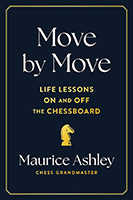 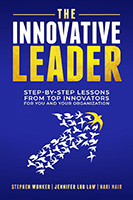 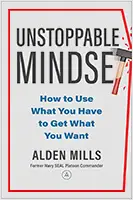 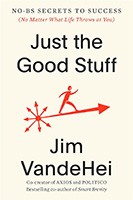
“Miss a meal if you have to, but don't miss a book.” — Jim Rohn
Posted by Michael McKinney at 07:21 AM
03.31.24

LeadershipNow 140: March 2024 Compilation
See more on
Posted by Michael McKinney at 09:34 AM
|
BUILD YOUR KNOWLEDGE


How to Do Your Start-Up Right STRAIGHT TALK FOR START-UPS 
Grow Your Leadership Skills NEW AND UPCOMING LEADERSHIP BOOKS 
Leadership Minute BITE-SIZE CONCEPTS YOU CAN CHEW ON 
Classic Leadership Books BOOKS TO READ BEFORE YOU LEAD |